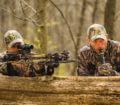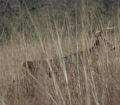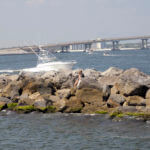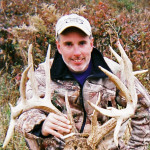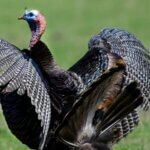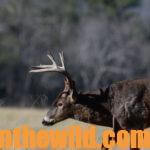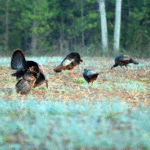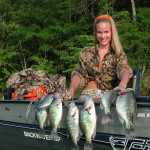Editor’s Note: William Crawford of Montevallo, Alabama, the director of the Outdoor Scholars Program at the University of Montevallo and a longtime hunter, has been a Labrador retriever trainer since he was 13-years old. He trains Labs to: find wounded deer; to locate, pick up and bring back shed antlers; to find and retrieve doves; and to pinpoint and retrieve ducks. With bow season starting, the bowhunter is the one most likely to need a blood-trailing dog, although that’s not a completely accurate term. “Often there won’t be a blood trail,” Crawford explains. “But because a wounded deer leaves a scent from the glands between his toes, our dogs can find deer – even without a blood trail. They can identify deer in the water, and our best dogs even can find and retrieve deer that may be underwater.”
 When I asked Crawford if a dog had been taught to blood trail and locate a wounded deer and to retrieve shed antlers in the spring, how did that dog understand what it was supposed to do when taken into the woods? “Dogs work off of key words,” Crawford emphasizes. “For example, when I tell a dog to, ‘Hunt it up,’ the dog knows the time’s come to go find something – either to track or to find antlers. Over time, the dog learns by several different factors what you mean when you say those words. For instance, when tracking a wounded deer, the dog will see me put on a vest and wear a certain type of clothing. Then I’ll take the dog out and put it on a blood trail. Trained dogs know what collars they wear when they’re blood trailing, and when they’re hunting shed antlers. So, they understand by words and visual cues what you expect them to do.”
When I asked Crawford if a dog had been taught to blood trail and locate a wounded deer and to retrieve shed antlers in the spring, how did that dog understand what it was supposed to do when taken into the woods? “Dogs work off of key words,” Crawford emphasizes. “For example, when I tell a dog to, ‘Hunt it up,’ the dog knows the time’s come to go find something – either to track or to find antlers. Over time, the dog learns by several different factors what you mean when you say those words. For instance, when tracking a wounded deer, the dog will see me put on a vest and wear a certain type of clothing. Then I’ll take the dog out and put it on a blood trail. Trained dogs know what collars they wear when they’re blood trailing, and when they’re hunting shed antlers. So, they understand by words and visual cues what you expect them to do.”
The time of year is also a cue that the dogs learn that helps them to understand what you want them to do when you’re in the field. Since Crawford has trained dogs to pick up antlers, to blood trail, to find and retrieve ducks, and to pick up doves out of a dove field, the hunter who participates in all these sports will have one dog that can do it all. These highly-intelligent Labrador retrievers recognize that if you’re holding a dove stool and a shotgun, are wearing camouflage and sitting on a field, then you’re dove hunting. If you’re wearing camouflage, holding a shotgun and sitting in a blind, or you’ve created a blind on the edge of water, or you’re out in the water, and the dog is sitting on a platform, the dog will realize you’re hunting ducks. In the spring or summer when you’re hunting open lands, and the dog isn’t put on a blood trail or a deer trail, then the dog understands it needs to pick up shed antlers and bring them to you. But if the hunter’s wearing a vest, and the dog is seated while wearing a Kevlar vest like hog dogs wear, the dog knows it will be blood trailing. “Over the years, I’ve learned that the more things a Labrador retriever can be trained to do, the better it will be at each one of those tasks,” Crawford explains.
 To contact William Crawford, call 205-792-9288 or go to his Facebook page www.facebook.com/SilverBandedRetrievers or www.silverbandedRetrievers.com. For more information about the University of Montevallo’s Outdoor Scholars Program, visit http://outdoorscholars.montevallo.edu.
To contact William Crawford, call 205-792-9288 or go to his Facebook page www.facebook.com/SilverBandedRetrievers or www.silverbandedRetrievers.com. For more information about the University of Montevallo’s Outdoor Scholars Program, visit http://outdoorscholars.montevallo.edu.
For more information about deer hunting, check out John E. Phillips’ eBooks, print and Audible books, at johninthewild.com/books/#deer and www.barnesandnoble.com for Nook books. You can type in the name of the book and download it to your Kindle, and/or download a Kindle app for your iPad, SmartPhone or computer. For a free download on how to make jerky from venison to provide a protein-rich snack, choose “How to Prepare Venison Jerky: The Ultimate Snack Food” at johninthewild.com/free-books.

